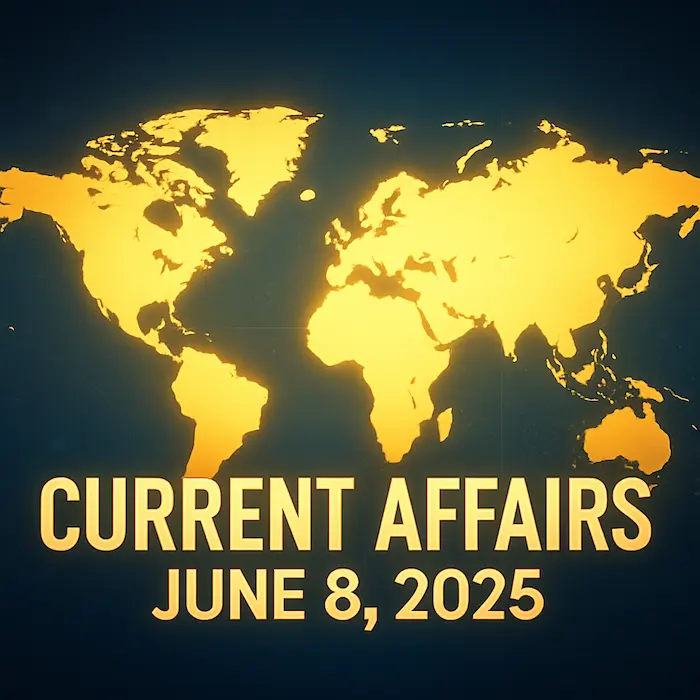1. RBI’s Monetary Policy Committee (MPC) Decisions – Economy
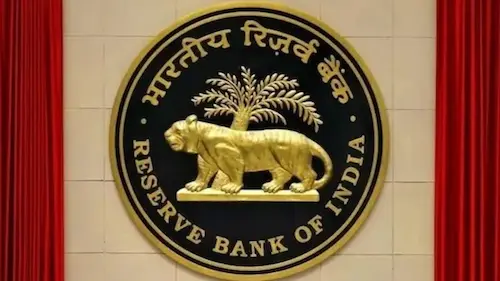
Why in News?
The Reserve Bank of India (RBI) recently announced a significant cut in the Cash Reserve Ratio (CRR) during its Monetary Policy Committee (MPC) meeting.
This move will inject ₹2.5 lakh crore into the banking system by November 2025, thereby enhancing liquidity.
Key Takeaways
- The CRR will be reduced by 1% in four tranches, bringing it down to 3% by November 29, 2025.
- The Statutory Liquidity Ratio (SLR) remains unchanged at 18% of Net Demand and Time Liabilities (NDTL).
Additional Concepts & Background
1. Cash Reserve Ratio (CRR)
- The % of a bank’s total deposits that must be maintained as liquid cash with RBI.
- Banks cannot lend or invest this amount.
- No interest is earned on this reserve.
- Tool for controlling liquidity and inflation:
- Higher CRR → Lower liquidity → Controls inflation.
- Lower CRR → Higher liquidity → Boosts growth.
Current CRR before decision: 4.5% of NDTL.
2. Statutory Liquidity Ratio (SLR)
- % of NDTL banks must maintain in liquid assets (cash, gold, govt securities).
- Ensures bank solvency and curbs excessive credit growth.
- Policy tool to:
- Manage credit expansion.
- Maintain demand for government securities.
Current SLR: 18% of NDTL.
3. Repo Rate
- Interest rate at which RBI lends short-term funds to commercial banks against government securities.
- Policy instrument to manage borrowing costs and liquidity:
- Lower Repo Rate → Cheaper borrowing → Increased liquidity.
- Higher Repo Rate → Costlier borrowing → Reduced liquidity.
4. Variable Rate Repo (VRR) Auction
- Repo operations conducted by RBI at variable rates, determined through competitive bidding by banks.
- Reflects real-time demand and supply of liquidity.
5. Standing Deposit Facility (SDF)
- Facility allowing banks to park surplus funds with RBI without collateral.
- Banks earn interest at a rate set by RBI.
- Used to absorb excess liquidity from the system.
6. Weighted Average Call Rate (WACR)
- The weighted average rate at which banks borrow and lend overnight funds in the interbank call money market.
- Key short-term liquidity indicator.
Significance of RBI’s Recent Decisions
Boosts liquidity in the banking system → Aims to support economic growth.
Helps banks expand lending to businesses and consumers.
Maintains financial stability by keeping SLR unchanged.
Balances need for growth while monitoring inflation trends.
Summary
The RBI’s reduction of CRR is part of a calibrated approach to liquidity management — ensuring enough credit is available to spur growth while keeping the banking system stable.
Maintaining the SLR indicates a cautious approach to managing systemic risks while using other tools like repo rate, VRR, and SDF to dynamically manage liquidity.
Exam Connect – Possible Questions
Prelims
1. If the RBI decides to adopt an expansionist monetary policy, which of the following would it not do?
1. Cut and optimise the Statutory Liquidity Ratio.
2. Increase the Marginal Standing Facility Rate.
3. Cut the Bank Rate and Repo Rate.
Select the correct answer using the code below:
A. 1 and 2 only
B. 2 only
3. 1 and 3 only
4. 1, 2 and 3
Answer: B. 2 only
Increasing MSF rate is contractionary, not expansionary.
2. Which of the following statements regarding Cash Reserve Ratio (CRR) is/are correct?
1.CRR is a tool used by RBI to control liquidity in the banking system.
2.Banks earn interest on the cash parked with RBI as CRR.
3. Increasing CRR reduces the capacity of banks to lend.
Select the correct answer using the code below:
A.1 and 2 only
B.1 and 3 only
C. 2 and 3 only
D. 1, 2 and
Answer: B. 1 and 3 only
Banks do not earn interest on CRR.
Mains
- Discuss the role of RBI’s Cash Reserve Ratio (CRR) and Statutory Liquidity Ratio (SLR) in maintaining financial stability and managing liquidity in the economy. (250 words)
- How do monetary policy tools like the Repo Rate, Variable Rate Repo (VRR), and Standing Deposit Facility (SDF) enable RBI to ensure balanced economic growth? Illustrate with recent examples. (250 words)
- In the context of recent decisions by the RBI’s Monetary Policy Committee, critically analyse the impact of CRR reduction on credit growth, inflation, and economic recovery in India. (250 words)
2. PM Inaugurates Chenab Railway Bridge – Defence & Security
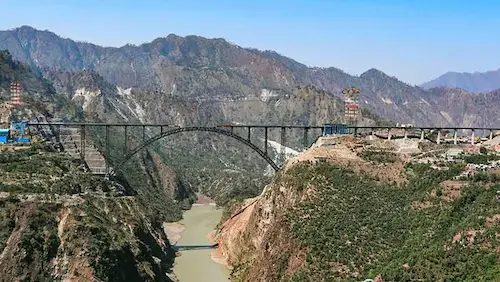
Why in News?
The Prime Minister inaugurated the world’s highest railway bridge, built across the Chenab River in Jammu and Kashmir — a landmark achievement in Indian engineering and strategic infrastructure development.
Key Takeaways
- The Chenab Rail Bridge is now the highest railway bridge globally.
- Located in Reasi district, Jammu & Kashmir.
- Height: 359 metres → taller than the Eiffel Tower by 35 metres.
- Integral part of the Udhampur–Srinagar–Baramulla Rail Link (USBRL) — aimed at improving rail connectivity in the region.
Additional Details
1. Structure & Length
- Total length: 1,315 metres.
- 530 metres → approach bridge.
- 785 metres → steel arch bridge.
2. Project Execution
- Executed by Konkan Railway Corporation.
- Collaborators:
- Afcons Infrastructure.
- Ultra Construction & Engineering (South Korea).
- VSL India.
3. Design & Engineering
- Foundation designed by IISc Bengaluru.
- Seismic analysis conducted by IIT Delhi & IIT Roorkee.
- Blast-proof features developed by DRDO.
4. Durability & Safety
- Withstands:
- Earthquakes up to Magnitude 8.
- Blast impacts of 40 tonnes TNT equivalent.
- Temperatures as low as -20°C.
- Wind speeds of 266 km/h.
5. Speed & Lifespan
- Train speed supported: up to 100 km/h.
- Design lifespan: 120 years.
- 6. Key Milestones
- Arch closure: April 2021.
- Golden Joint Ceremony: August 13, 2022.
6. Anji Bridge — Also Inaugurated
- India’s first cable-stayed railway bridge.
- Built over the Anji River (tributary of Chenab).
- Second highest railway bridge in India.
- Length: 725 metres.
- Features:
- 96 cables.
- Ancillary viaduct + central embankment.
- Withstands:
- Seismic activity.
- Unstable terrain.
- Strong winds and heavy storms.
Significance
Enhances railway connectivity in the strategically important J&K region.
Boosts defence logistics and economic development.
Showcases India’s engineering prowess and ability to build in difficult terrains.
Symbol of national integration and connectivity push in remote border areas.
Complements broader initiatives like USBRL, Kavach, and National Rail Plan.
Exam Connect – Possible Questions
Prelims
1. Consider the following statements:
1. Indian Railways have prepared a National Rail Plan (NRP) to create a future-ready railway system by 2028.
2. ‘Kavach’ is an Automatic Train Protection system developed in collaboration with Germany.
3. ‘Kavach’ system consists of RFID tags fitted on track in station sections.
Which of the statements given above are not correct?
Options:
A. 1 and 2 only
B. 2 and 3 only
C. 1 and 2 only
D. 1, 2 and 3
Answer: D. 1, 2 and 3
Correct Facts:
- NRP targets 2030, not 2028.
- Kavach is indigenously developed by Indian Railways.
- Kavach uses RFID devices on locomotives, not merely RFID tags on track.
2. With reference to the Chenab Rail Bridge, consider the following facts:
1.It is taller than the Eiffel Tower.
2.It is designed to withstand earthquakes of up to magnitude 9.
3.It is a cable-stayed bridge.
Which of the statements is/are correct?
A.1 only
B. 1 and 2 only
C.1 and 3 only
D. 1, 2 and 3
Answer: A. 1 only
Earthquake resistance: Magnitude 8, not 9.
The Chenab bridge is an arch bridge, not a cable-stayed bridge (Anji Bridge is cable-stayed).
Mains
- Discuss the strategic and economic significance of the Udhampur–Srinagar–Baramulla Rail Link (USBRL) project, with reference to recent infrastructure achievements in Jammu & Kashmir. (250 words)
- The Chenab Rail Bridge is an example of India’s growing capabilities in engineering and infrastructure. Discuss the key challenges and innovations involved in constructing such projects in difficult terrains. (250 words)
- Critically analyse how infrastructure projects like Chenab Rail Bridge and Anji Bridge contribute to national security and regional integration in sensitive border areas. (250 words)
3. India’s Extreme Poverty Falls Sharply Under Revised World Bank Poverty Line – Economy
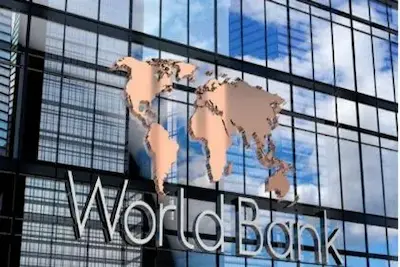
Why in News?
India has witnessed a remarkable reduction in extreme poverty, with rates falling to 5.3% in 2022-23 from 27.1% in 2011-12, as reported by the World Bank with updated data.
The decline is faster than in previous decades and reflects India’s economic growth and social welfare improvements.
Key Takeaways
- Extreme poverty rate under revised threshold ($3/day, 2021 PPP) has fallen significantly:
- 2011-12: 27.1%.
- 2022-23: 5.3%.
- Number of people in extreme poverty:
- 2011-12: 344 million.
- 2022-23: ~75 million.
- Both rural and urban poverty rates have seen sharp declines.
Additional Details
1. Revised Global Poverty Thresholds
- World Bank revised extreme poverty line:
- From $2.15/day → to $3/day in 2021 PPP terms.
- Reflects rising living costs.
- Ensures better comparability across time periods.
2. India’s Progress Under Different Poverty Lines
| Poverty Line | 2011-12 | 2022-23 |
|---|---|---|
| $2.15/day | 16.2% | 2.3% |
| $3/day | 27.1% | 5.3% |
| $4.20/day (Lower-middle income line) | 57.7% | 23.9% |
Progress is significant across all poverty thresholds.
3. Demographic & Educational Inequities
- Rural poverty:
- 2011-12: 69%.
- 2022-23: 32.5%.
- Urban poverty:
- 2011-12: 43.5%.
- 2022-23: 17.2%.
- Educational gap:
- Among individuals aged 16+ with no formal education → 35.1% below poverty line.
- Among individuals with post-secondary education → 14.9% below poverty line.
4. Improvements in Non-Monetary Indicators
- Non-monetary poverty:
- 2005-06: 53.8%.
- 2022-23: 15.5%.
- Multidimensional poverty (NITI Aayog estimates):
- 2013-14: 29.17%.
- 2022-23: 11.28%.
Multidimensional poverty includes factors like health, education, living standards — not just income.
5. Consumption Trends
- Rural Monthly Per Capita Expenditure (MPCE):
- 2011-12: ₹1,430.
- 2023-24: ₹2,079.
- Urban MPCE:
- 2011-12: ₹2,630.
- 2023-24: ₹3,632.
Indicates improved living standards and higher consumption capacity.
Significance
Reflects India’s economic growth and welfare improvements.
Progress is consistent even under revised global benchmarks.
Decline in rural and urban poverty is a major achievement.
Non-monetary and multidimensional poverty reductions highlight comprehensive development.
Challenges Ahead
Persistent disparities across rural vs urban and education levels.
Need for inclusive growth to address regional and demographic inequities.
Need for sustained efforts post-pandemic, as full 2023-24 data will provide deeper insights.
Exam Connect – Possible Questions
Prelims
1. Which of the following statements is/are correct regarding the recent trends in India’s poverty reduction?
1.The World Bank has revised the extreme poverty line to $3/day in 2021 PPP terms.
2. Multidimensional poverty in India has increased since 2013-14.
3.Rural Monthly Per Capita Expenditure (MPCE) has declined since 2011-12.
Select the correct answer using the code below:
A. 1 only
B. 1 and 2 only
C. 2 and 3 only
D.1, 2 and 3
Answer: A. 1 only
Statement 2 incorrect — multidimensional poverty has declined.
Statement 3 incorrect — rural MPCE has increased.
2. Consider the following pairs:
| Indicator | Trend (2011-12 to 2022-23) |
|---|---|
| Rural poverty | Declined |
| Urban poverty | Increased |
| Multidimensional poverty | Declined |
Which of the above pairs are correctly matched?
A. 1 and 2 only
B. 1 and 3 only
C. 2 and 3 only
D. 1, 2 and 3
Answer: B. 1 and 3 only
Urban poverty has declined, not increased.
Mains
- Discuss the recent trends in poverty reduction in India as reported by the World Bank. What factors have contributed to this progress, and what challenges remain? (250 words)
- Critically examine the significance of multidimensional poverty indicators in measuring the true extent of poverty in India. How do they complement income-based measures? (250 words)
- The sharp reduction in rural and urban poverty in India reflects both economic growth and targeted welfare interventions. Discuss. (250 words)
4. Water Management in India Needs a New Course – Environment
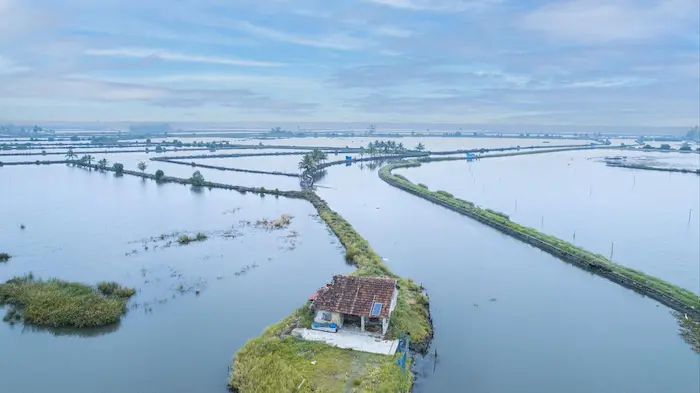
Why in News?
- World Water Day 2025 (March 22) highlighted the theme of Glacier Preservation.
- UN declared 2025 as the International Year of Glaciers’ Preservation.
- Launch of the Decade of Action on Cryospheric Science (2025–2034).
- Global discussions now focus on the entire hydrological continuum — from mountain glaciers to oceans.
- India’s fragmented and stressed water management system requires a new governance approach.
Key Takeaways
- UN World Water Development Report 2025 stresses the critical role of mountain glaciers in sustaining ecosystems and human populations.
- Melting glaciers due to climate change threaten water security and freshwater flow patterns globally.
- Source-to-Sea (S2S) framework is proposed for integrated water governance — connecting freshwater, coastal, and marine domains.
- India faces:
- Acute water stress.
- Severe river pollution.
- Unsustainable groundwater depletion.
- Fragmented water governance.
Additional Details
1. Source-to-Sea (S2S) Framework
- Holistic water management from glaciers → rivers → coastal areas → oceans.
- Promotes cooperation across:
- Government agencies.
- Local communities.
- Private stakeholders.
- Integrates policies on:
- Water quality.
- Pollution control.
- Ecosystem protection.
- Marine health.
2. India’s Water Management Challenges
a) Regional Disparities
- Water availability varies greatly between states.
- Some regions face scarcity, while others suffer from seasonal flooding.
b) Groundwater Depletion
- Over 60% of irrigation and 85% of drinking water depend on groundwater.
- Many aquifers are rapidly depleting.
c) River Pollution
- Rivers like Ganga, Yamuna, Godavari, and Sabarmati face severe pollution.
- Impacts public health and aquatic biodiversity.
d) Fragmented Governance
- Multiple ministries/agencies handle different aspects of water management → lack of coordination.
- National Water Policy updated, but S2S framework remains underutilized.
3. Link with Sustainable Development Goals (SDGs)
- SDG 6 → Clean Water and Sanitation:
- Calls for integrated water resources management.
- SDG 14 → Life Below Water:
- Focuses on reducing marine pollution from land-based activities.
S2S framework helps align India’s efforts with these global targets.
Significance of Adopting S2S in India
Encourages whole-system thinking → not just river management, but also impacts on estuaries and marine ecosystems.
Helps combat climate change impacts (e.g. glacial melt, sea-level rise).
Supports climate resilience and ecosystem health.
Addresses policy fragmentation by fostering coordinated governance.
Aligns with India’s environmental commitments under SDGs and Paris Agreement.
Conclusion
As glacier preservation gains global focus, India must reimagine water governance using the Source-to-Sea framework.
This is both an environmental necessity and a developmental imperative to ensure sustainable water management in the face of climate change.
Exam Connect – Possible Questions
Prelims
1. Consider the following statements regarding the Source-to-Sea (S2S) framework:
1. It promotes an integrated approach to managing freshwater, coastal, and marine resources.
2. It focuses solely on reducing marine plastic pollution.
3. It aligns with Sustainable Development Goals (SDGs) 6 and 14.
Which of the statements given above are correct?
A. 1 and 2 only
B. 1 and 3 only
C. 2 and 3 only
D. 1, 2 and 3
Answer: B. 1 and 3 only
The S2S framework is holistic and not limited to plastic pollution.
2. The Decade of Action on Cryospheric Science (2025–2034) focuses primarily on:
A. Global freshwater governance reform.
B. Deep ocean mining and exploration.
C. The study and preservation of ice-covered regions of the Earth.
D. Expansion of hydropower energy.
Answer: C. The study and preservation of ice-covered regions of the Earth.
Mains
- Discuss the challenges faced by India in achieving sustainable water management. How can adopting the Source-to-Sea (S2S) framework help address these challenges? (250 words)
- How does glacier preservation contribute to water security in India? In this context, analyse India’s preparedness to tackle climate-induced threats to its cryosphere. (250 words)
- Critically evaluate the effectiveness of India’s current water governance structure. Suggest reforms for achieving integrated water resources management. (250 words)
5. India Elected to UN’s Economic and Social Council (ECOSOC) – International Relations
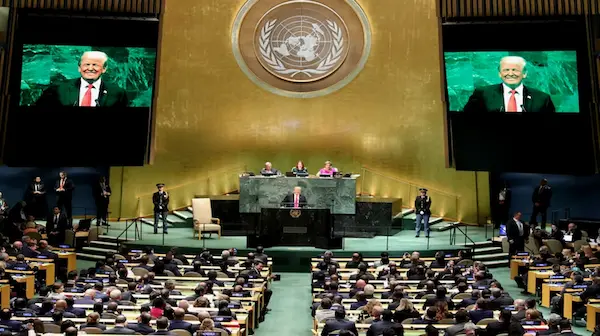
Why in News?
- India has been elected to the United Nations Economic and Social Council (ECOSOC) for the term 2026–2028.
- This marks India’s 18th term on ECOSOC — a significant achievement in India’s ongoing international diplomatic efforts and role in global governance.
Key Takeaways
- ECOSOC plays a critical role in coordinating the UN’s work in economic, social, humanitarian, and cultural areas.
- India aims to use its tenure to advocate for:
- Inclusive growth.
- Progress on Sustainable Development Goals (SDGs).
- Promotion of South-South cooperation.
- Evidence-based, data-driven multilateral leadership.
Additional Details
1. Establishment
- ECOSOC is one of the six principal organs of the UN.
- Established in 1945, under the UN Charter.
2. Mandate
- Coordinates the UN’s:
- Economic policies.
- Social policies.
- Humanitarian efforts.
- Cultural initiatives.
3. Composition
- ECOSOC has 54 member states.
- Members are elected by the UN General Assembly.
- Term: 3 years.
- Voting: Elected by a simple majority, not a 2/3rd majority (Clarification for Prelims Q).
4. Functions and Powers
- Oversees:
- 15 specialized agencies (e.g. UNICEF, WHO, UNDP).
- 8 functional commissions.
- 5 regional commissions.
- Focus areas include:
- Living standards.
- Employment.
- Human rights.
- Education.
- Healthcare.
- Environmental protection.
5. Engagement with NGOs
- Grants consultative status to over 1,600 NGOs.
- Organizes global conferences to encourage wider participation in global governance.
6. UN Oversight
- Supervises important UN bodies:
- UNICEF.
- UNDP.
- UNHCR, among others.
7. Sessions and Meetings
- Main sessions: Held every July.
- Additional meetings include:
- Finance Dialogues (April), with a focus on SDGs.
8. Legal and Institutional Details
- Defined under Chapter X (Articles 61–72) of the UN Charter.
- Headquarters: New York.
- ECOSOC is the largest UN body involved in shaping global development policy.
9. Recent Milestone for India
- India joined the UN Committee of Experts on Big Data and Data Science for Official Statistics (UN-CEBD).
- Reflects India’s growing expertise in data-driven governance.
10. Policy Priorities for India in ECOSOC
- Promote inclusive and sustainable development.
- Support progress on SDGs.
- Strengthen South-South cooperation.
- Drive data-based policy making within multilateral forums.
Significance
Reinforces India’s leadership and credibility in global governance.
Provides India a platform to influence global development policy.
Aligns with India’s broader multilateral diplomacy strategy.
Enhances opportunities to foster South-South cooperation and development partnerships.
Exam Connect – Possible Questions
Prelims
1.With reference to the United Nations, consider the following statements:
1. The Economic and Social Council (ECOSOC) of UN consists of 24 member States.
2. It is elected by a 2/3 majority of the General Assembly for a 3-year term.
Which of the statements given above is/are correct?
A. 1 only
B. 2 only
C. Both 1 and 2
D. Neither 1 nor 2
Answer: D. Neither 1 nor 2
Correct facts:
- ECOSOC has 54 members, not 24.
- Members are elected by simple majority, not 2/3 majority.
2. Which of the following UN bodies is tasked with granting consultative status to NGOs?
A. UN Security Council
B. UN Human Rights Council
C. UN Economic and Social Council (ECOSOC)
D.UN General Assembly
Answer: C.ECOSOC.
Mains
- India’s election to ECOSOC underlines its growing role in global governance. Discuss India’s priorities and potential contributions during its 2026–2028 term on the Council. (250 words)
- Critically analyse the role of ECOSOC in promoting the Sustainable Development Goals (SDGs). How can India leverage its membership to advance its global development agenda? (250 words)
- ECOSOC serves as the primary UN body for shaping international development cooperation. Evaluate its significance and challenges in the current global context. (250 words)
6. Global Vaccine Trends and the Resurgence of Measles — A Public Health Wake-Up Call – Science and Technology
Why in News?
- The ongoing resurgence of measles cases in the United States is a reminder that even advanced healthcare systems remain vulnerable to vaccine-preventable diseases.
- The COVID-19 pandemic, while accelerating global vaccine rollouts, also led to a decline in routine vaccination rates — especially for measles, which had been eliminated in the US in 2000.
Key Takeaways
- Vaccines are critical for both individual and community health → they help achieve herd immunity and prevent disease transmission.
- As of May 2023, the US reported over 1,046 measles cases — mainly among unvaccinated individuals.
- Global measles vaccine coverage is still below the 95% threshold needed to prevent outbreaks.
Additional Details
1. Expanded Programme on Immunisation (EPI)
- Launched by WHO in the 1980s to improve global vaccine access.
- Originally included vaccines for:
- Diphtheria-Tetanus-Pertussis (DTP).
- Polio.
- Bacillus Calmette–Guérin (BCG) for tuberculosis.
- Later expanded to include Measles, Hepatitis B, Rotavirus, etc.
2. Vaccine Hesitancy
- Vaccine hesitancy has emerged as a major public health challenge.
- Causes include:
- Post-pandemic skepticism about vaccines.
- Misinformation and conspiracy theories (e.g., false links between MMR vaccine and autism).
- Distrust in health authorities and pharmaceutical companies.
3. India’s Immunisation Efforts
- Universal Immunisation Programme (UIP):
- India’s largest public health programme for vaccination.
- Achieved 95% coverage in 2023–24.
- Targets 12 vaccine-preventable diseases.
- Mission Indradhanush:
- Launched in 2014 to reach unimmunised and under-immunised children.
- Focuses on low coverage districts.
- Expanded to urban areas and hard-to-reach populations.
4. Importance of Maintaining High Vaccination Rates
- To maintain herd immunity, vaccine coverage needs to remain above 95%.
- Measles is highly contagious — one of the most infectious viruses known.
- Falling coverage can lead to resurgence, even in countries where the disease had been eliminated.
5. Global Lessons
- COVID-19 highlighted the importance of vaccination but also strained routine immunisation systems.
- There is a global need to:
- Strengthen vaccine delivery systems.
- Combat vaccine hesitancy through education and community engagement.
- Ensure equity in vaccine access.
Significance
Vaccines are among the most cost-effective public health interventions.
Maintaining high vaccination rates is crucial for preventing the resurgence of diseases like measles.
India’s progress in immunisation is commendable, but vigilance is needed to counter misinformation.
Global coordination and local action are both essential for sustaining public health gains.
Exam Connect – Possible Questions
Prelims
1. Consider the following statements regarding the Expanded Programme on Immunisation (EPI):
1. It was launched by WHO in the 1980s to improve global vaccine access.
2. The original programme included vaccines for DTP, Polio, and Measles.
3. Vaccine hesitancy is unrelated to the resurgence of vaccine-preventable diseases.
Which of the statements given above are correct?
A. 1 and 2 only
B. 2 and 3 only
C. 1 and 3 only
D. 1, 2 and 3
Answer: A. 1 and 2 only
Statement 3 is incorrect → vaccine hesitancy is a key factor in disease resurgence.
2. It reference to Mission Indradhanush in India, consider the following statements:
1. It aims to achieve universal immunisation coverage in India.
2. It initially focused only on urban areas.
3. It targets both children and pregnant women.
Which of the statements given above are correct?
A.1 and 2 only
B.1 and 3 only
C. 2 and 3 only
D.1, 2 and 3
Answer: B. 1 and 3 only
Initially targeted low coverage districts — not limited to urban areas.
Mains
- Discuss the factors contributing to the resurgence of measles globally. How can public health systems address vaccine hesitancy effectively? (250 words)
- Critically evaluate India’s immunisation strategy with reference to the Universal Immunisation Programme (UIP) and Mission Indradhanush. What challenges remain in achieving universal vaccine coverage? (250 words)
- Vaccines are a cornerstone of public health. In the context of recent global trends, analyse the role of public awareness, trust, and effective communication in sustaining high vaccination rates. (250 words)
7. Maintaining India’s Progress in Food Safety Standards – Governance
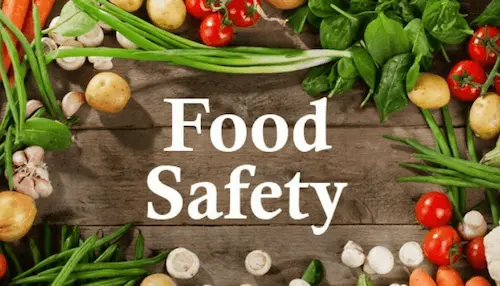
Why in News?
- On June 7, the world observed World Food Safety Day.
- The 2025 theme, ‘Food Safety: Science in Action’, calls attention to the need for modern, science-based food safety standards.
- India has progressed from basic food adulteration prevention to adopting risk-based approaches — but gaps remain in infrastructure, communication, and regulation.
Key Takeaways
- India’s food safety framework has evolved significantly:
- From Prevention of Food Adulteration (PFA) Act, 1954 → to Food Safety and Standards Act, 2006.
- Establishment of FSSAI in 2006 introduced a risk-based approach.
- Challenges:
- Heavy reliance on international data not aligned with Indian dietary habits.
- Poor risk communication to the public.
- Presence of outdated regulations (e.g. around MSG).
Additional Details
1. Prevention of Food Adulteration (PFA) Act, 1954
- Marked the beginning of India’s food safety regime.
- Categorised food as either adulterated or non-adulterated.
- Did not account for:
- Nature of contaminants.
- Quantity or toxicity levels.
2. Food Safety and Standards Act (FSS Act), 2006
- Established the Food Safety and Standards Authority of India (FSSAI).
- Introduced a risk-based approach.
- Set Maximum Residue Limits (MRLs) for pesticides and safe thresholds for food additives.
- Key shift:
- From a penal, inspection-driven regime → to scientific risk management.
3. Scientific Gaps in Risk Assessment
- India’s framework still relies heavily on international toxicological data.
- Lacks India-specific Total Diet Studies (TDS):
- TDS captures actual dietary patterns of the Indian population.
- Essential for setting accurate safety thresholds.
- Result: Potential mismatch between risk estimates and actual exposure levels in India.
4. Risk Communication Issues
- Concepts like MRLs and Acceptable Daily Intake (ADI) are often poorly explained to the public.
- Leads to:
- Public fear and panic.
- Media misreporting during regulatory updates.
- Example: Confusion around pesticide residues or food additive safety.
5. Regulation of Monosodium Glutamate (MSG)
- Scientific evidence supports MSG’s safety when used within recommended limits.
- Outdated Indian regulations have not kept pace with this evidence.
- Result: Consumer misconceptions and industry uncertainty.
6. The Road Ahead
To strengthen India’s food safety framework, the following steps are needed:
Invest in India-specific scientific research (esp. Total Diet Studies).
Simplify risk communication — make it public-friendly and transparent.
Periodically review and update regulations to reflect current scientific evidence.
Engage all stakeholders — including consumers, industry, and scientists — to build trust in the system.
Significance
India has made commendable progress — from a basic adulteration focus to a science-driven approach.
A more context-specific and evidence-based system will ensure consumer protection and public confidence.
Effective communication is essential to avoid panic and promote informed consumer choices.
Aligning with global standards also supports India’s food exports and trade interests.
Exam Connect – Possible Questions
Prelims
1. Consider the following statements regarding India’s food safety regulations:
The Prevention of Food Adulteration (PFA) Act of 1954 used a risk-based approach to regulate food safety.
The Food Safety and Standards Authority of India (FSSAI) was established under the Food Safety and Standards Act of 2006.
Total Diet Studies (TDS) are a part of India’s current food safety assessment system.
Which of the statements given above are correct?
A. 1 and 2 only
B. 2 only
C. 1 and 3 only
D. 1, 2 and 3
Answer: B. 2 only
PFA was not risk-based.
=TDS is currently absent in India’s system.
2.The term “Acceptable Daily Intake (ADI)” refers to:
A. The minimum amount of a nutrient required daily.
B. The maximum level of a contaminant that can be safely consumed daily over a lifetime.
C. The upper limit of calorie intake for a healthy diet.
D. The recommended daily protein intake for children.
Answer: B. The maximum level of a contaminant that can be safely consumed daily over a lifetime.
Mains
- Discuss the evolution of food safety standards in India. What are the key gaps in the current system, and how can they be addressed? (250 words)
- How can India improve risk communication and public engagement in the field of food safety? Suggest practical measures. (250 words)
- Critically examine the role of scientific research in shaping food safety regulations. How can India develop a more context-specific evidence base for its food safety policies? (250 words)

